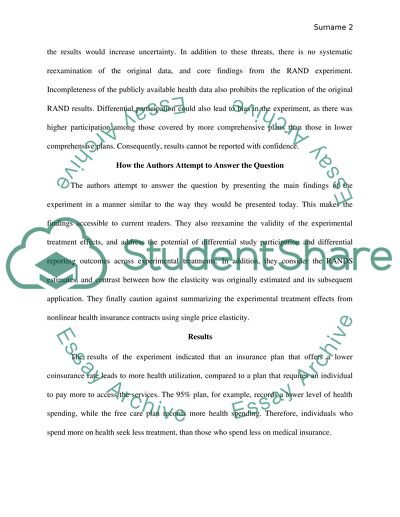Retrieved from https://studentshare.org/miscellaneous/1634800-summary-of-the-article-the-rand-health-insurance-experiment-three-decades-later
https://studentshare.org/miscellaneous/1634800-summary-of-the-article-the-rand-health-insurance-experiment-three-decades-later.


